- Joined
- May 3, 2011
- Messages
- 10,158
- Reaction score
- 4,934
U
What kind of knife is concerned?
Thanks. Will try.
What kind of knife is concerned?

Thanks. Will try.
First atempt will be made on a valuless SS quite sharp and fine behind the edge butcher knife. If it is a succes then a blue 2 Zakuri gyuto.U
What kind of knife is concerned?
First atempt will be made on a valuless SS quite sharp and fine behind the edge butcher knife. If it is a succes then a blue 2 Zakuri gyuto.
Very interesting.
Has anyone tried the grind like in figure 7 on traditional single-bevel knives?
I have never seen someone grind the ura like that before.
The uraoshi of a traditional knife is slightly concave and meant to be sharpened flat. There is precious little metal to work with for adding bevels. Some people put micro bevels on the heel of the uraoshi for strength on debas but it isn't wise to go further than that. In order to put a grind like # 7 on a single bevel you'd have to grind the uraoshi to the point of negating the design and/or ruining the knife completely.
It's hard to say without seeing the knife in person, but perhaps you have been thinning the bevel at a different angle from the original grind - or as you say, too light of a thinning. In this case a more intense thinning would work, if done only to the opposite side from the direction your blade is steering towards.So the general fix for unwanted steering is to thin the blade? What if you've been doing light thinning before every sharpening (low-angle) and notice steering while cutting? A more intense thinning is warranted then?
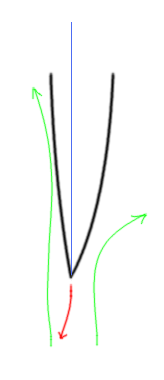
Your sharpening technique will have more of an influence over the steer, rather than your use of either the left or right hand.Could I cause steering to the left just as a consequence of sharpening naturally as a lefty?
Actually, this is a damn good question which touches on something I forgot to cover in my initial post.
The short answer is no, it doesn't have much of an affect. But if it does, you'll feel the knife steer off center as you cut through certain foods.
For a more detailed explanation:
Lets imagine you buy a brand new gyuto and take it out of the box. Assuming the makers have done their job correctly, the knife should not steer due to asymmetry... and importantly it should be thin behind the edge.
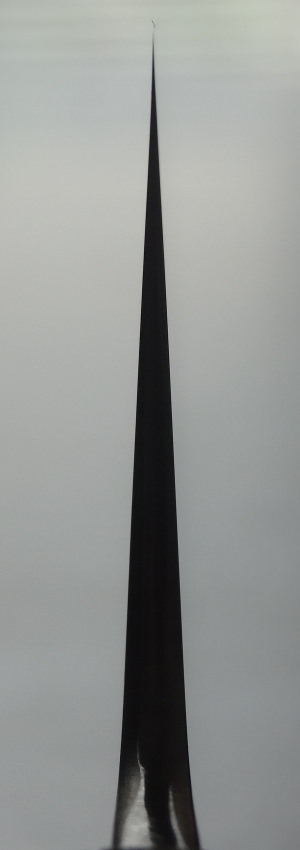
When a knife is thin behind the edge, any bevel you set through normal sharpening will be so small as to have a tiny effect on the overall steering of the knife.
This is very important when you consider: If the maker needed to correct a problem with steer using only the tiny bevel available to them along the cutting-edge, they may have had to put an extreme angle on it to get the desired counter-steer effect.
As the end user, you might go along happily using the knife and sharpening it every so often. Lets say you don't do any thinning to the areas behind the edge - The edge bevel gains a slight increase in size each time you sharpen the knife, and as a result that initially small bevel grows larger and begins to have more and more of an affect on the performance of the knife. Some people don't see this as a problem and allow it to spiral out of control.

What happens if you stick to the extreme asymmetric sharpening angle that was on the knife out of the box? As you can imagine, the magnified counter-steer effect of the larger bevel grows disproportionately to the asymmetry behind the edge, resulting in an over-correction to the steer.
The best way to deal with this is to THIN YOUR KNIFE! Fat edges are bad, mmmkay? :spankarse:
But if this is too advanced for you to attempt (or maybe you don't have the time or equipment), you'll need to make up for it by adjusting the asymmetry of the edge bevels. You can do this if you feel the knife starting to steer off-center during normal use by slightly changing the sharpening angles the next time you take the knife to the stones. Just be aware that if you get the knife thinned later on, you may have to revert back to the original sharpening asymmetry.
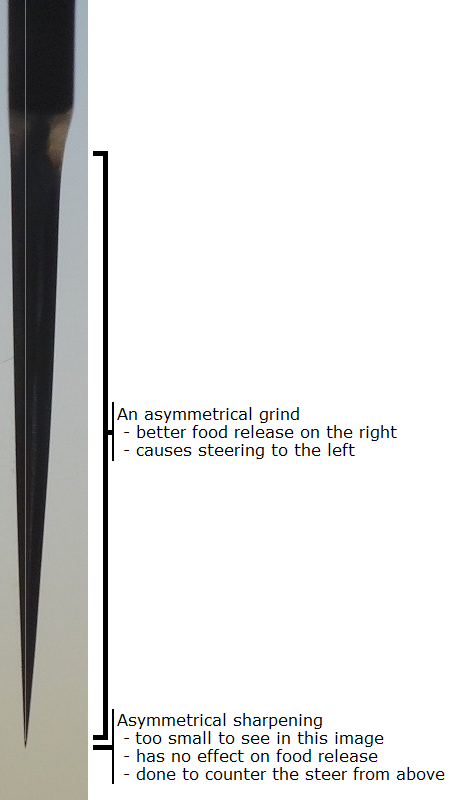
Thanks zetieum!
TEWNCfarms, I believe you've misunderstood the concept. There are two distinctly separate parts to this:

If you are only messing around with asymmetrical sharpening, you'll never get better food release off the existing grind.
In the original post I go all the way to figure 5 without talking about sharpening. Only once we get to 6 and 7 does it get introduced.
So tell me - have you been playing around with just the sharpening, or have you been modifying the grind as well?
I hope you start your sharpening behind the edge with a bit of thinning. Or you end in no time with a great looking poor cutter. Let the bevel be in line with the face.
Try to let the right, convex side flow into the bevel, as to form a continuous arc.
Try to let the right, convex side flow into the bevel, as to form a continuous arc.
Yes, you're moving a previous configuration to a slightly thicker part of the blade.
Some very common figures for a chef's knife: just above the edge, thickness is 0.2mm. At 5mm from there 0.5mm. At 10mm about 1mm.
If you don't thin when sharpening performance will rapidly decrease, and a Herder will turn into a Wüsthof within a year.
Try to let the right, convex side flow into the bevel, as to form a continuous arc.
Yes, you're moving a previous configuration to a slightly thicker part of the blade.
Some very common figures for a chef's knife: just above the edge, thickness is 0.2mm. At 5mm from there 0.5mm. At 10mm about 1mm.
If you don't thin when sharpening performance will rapidly decrease, and a Herder will turn into a Wüsthof within a year.
Nothing to dramatise. We're speaking here about perhaps the last two millimetres before the edge, which has perhaps a width of half of a millimetre. Forget the idea of a clear, pronounced bevel. That's only fine for the makers of poor EDCs. Easy to make and impress the public, but not very effective as far as cutting is concerned. I would start by removing the shoulder, and find out at which minimal angle you still feel comfortable. Make a scratching move perpendicular to the edge, and raise the spine little by little until you've reached the angle at which you raise a clear burr on the opposite side.
Or, instead of short scratching moves, make the more conventional move along the edge, and again, raise the spine little by little. See your progress by verifying the scratch pattern with a loupe, or use the Marker Trick.
I guess you know Mr Broida's excellent videos on YouTube.
Don't be afraid, it's no high tech. Until the twenties everybody sharpened his own razor. Until much more recently everybody on the countryside sharpened his own tools.
You need a lot of effort, time and powered tools to make errors who cannot easily be repaired. Others only need a bit of explanation.
We don't ask you to rebuild an entire blade. Just to restore a previous configuration that has moved a fraction of a millimetre.
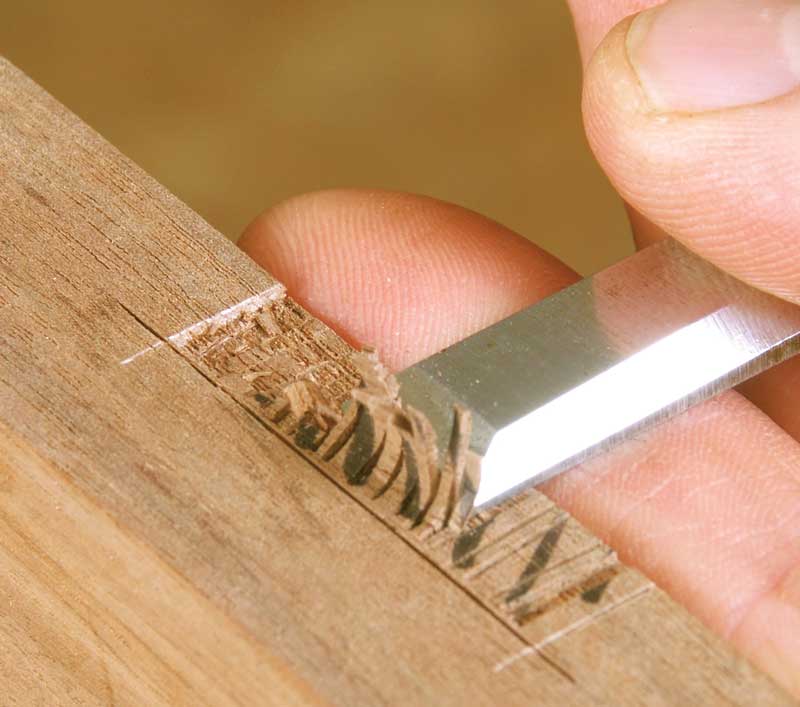
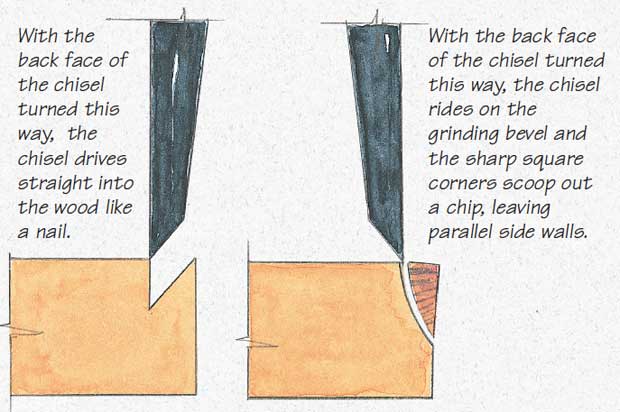
I can see why this is confusing....my bevels are shorter (is this what you mean by shallower or are you referring to angle?)...
If you're happy with your knifes' performance, changing up your angles would most likely be causing it more harm than good.I haven't noticed any steering with any knives but then I'm probably so used to it that if there were steering problems I've probably adjusted naturally anyway.
Enter your email address to join: